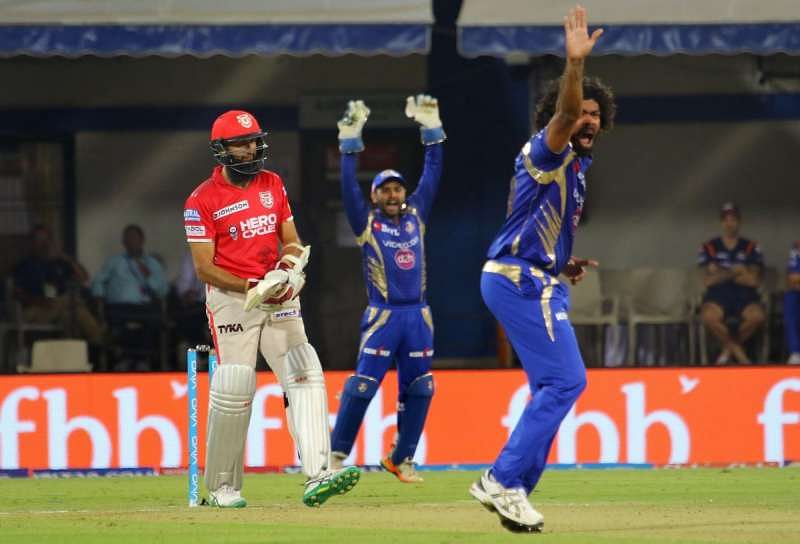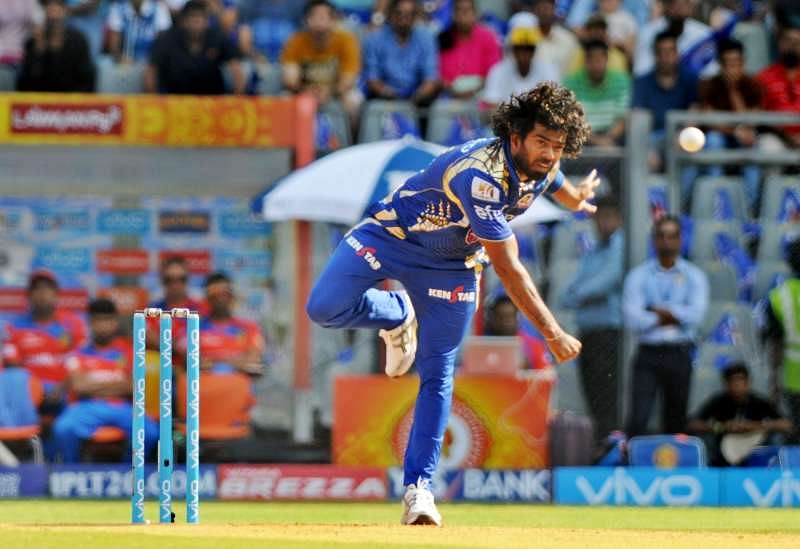
IPL 2017: What does the future hold for Lasith Malinga?
On a flat Indore wicket, it was evident from the start that the bowlers would be going for plenty of runs and hence there was nothing surprising when 397 runs were scored in just 36 overs. But what was surprising was to see Lasith Malinga, the IPL’s highest wicket taker, being smacked for 58 runs in his four overs.
It was not the first time that the Mumbai Indians pacer conceded more than 50 runs in a match. He had done so in the previous game, but against Kings XI he looked particularly toothless, and after that performance, it is clear that the hard-to-pick, tormenting and destructive Malinga is a thing of the past now.
Till 2016, in the IPL, the Sri Lankan played 98 matches, where he delivered 2289 balls and picked up 143 wickets, conceding 2546 runs. The most impressive stat of the right arm fast bowler was his staggering economy of 6.67 and strike rate of only 16.00.
However, in this season, the Sri Lankan pace bowler’s numbers have taken a serious beating as he been smashed for 175 runs in four matches so far and has picked up only four wickets. His economy rate has slipped to 10.93 while his strike rate has ballooned to 24.00.
Extra Cover: IPL 2017: Kings XI Punjab vs Mumbai Indians, Player ratings
This abysmal performance by Malinga in this season has caused trouble for the Mumbai Indians bowling attack and questions loom large over Malinga’s failure.
What has caused the Lankan fast bowler to go out of form? Pace certainly is not the answer as he still hits the 85-90 mph mark frequently. He still exhibits the same control over his length and has the ability to deliver variations at will. In fact, his bowling has remained highly consistent. Then, where is the Mumbai Indians pacer going wrong?
The answer actually lies in his consistency. The Malinga of four years and now is not very different: the dipping yorkers, the slower bouncers, and stump to stump lines were present four years ago and still remain the core of his bowling.
But there have been massive changes in the way the batters go about their business over the years, especially in T20 cricket. Maxwell, Kohli and Warner have added a new dimension to the concept of ‘aggression’, and batting units now go for the onslaught without holding back.
The likes of Pollard, Russell, and McCullum have proved the effectiveness of brute power and have shown numerous times in the past that more than timing, power yields maximum runs. On the other hand, Ab de Villiers has added 360-degree batting and his enormous success has enabled others to follow suit.
Batting in T20 cricket has undergone a huge transformation, and bowlers too had no option but to add new skills. But Malinga is one of the rare bowlers who hasn't innovated in the past few years. His success is still dependent on the same weapons – yorkers, slower balls, and deceptive cutters.
This was evident in yesterday’s match against Punjab when Hashim Amla milked Malinga for 22 runs in the 16th over. Malinga delivered one slower ball, one wide yorker, a couple of yorkers aimed at the base of stumps and a failed yorker that turned out to be a full toss, in that over.
The Lankan had few answers to Amla’s onslaught and this is where the Kings XI Punjab batsman emerged victorious. The veteran South African has widened his skills, packs more power in his shots and is helped by batting friendly T-20 rules and pitches. But, Malinga still depends on his three or four variations and alters them no matter what the batsman does.
When facing Malinga, batsmen now know what to expect, and as he rarely bowls the fourth or fifth stump line, batsmen already get into a better position to aim for the cow corner. This is effectively revealed in the wagon wheel of runs scored against Malinga.
In IPL 2017, in the arc between square leg and long off, Malinga has been smashed for 100 runs which account for 61.34% of the total runs he has conceded. While only 15 and 11 runs are scored in the cover and third man region, respectively. The lack of runs on the off-side clearly suggests the Sri Lankan pace bowler’s line, while the fact that 43.55% of his total runs are scored in the mid-wicket and long on region reveals his lengths.
Innovation has always been the reason for Malinga’s success. He arrived at the international arena through an innovative and unconventional bowling style of delivering the ball through a round arm action. But once the hype about his action faded and the batsmen adapted to his action, he developed yorkers. Unlike other bowlers, his yorkers were accurate, dipping on the batsmen and swinging too.
When batsmen devised methods to neutralise his yorkers, the right arm pacer varied his pace and delivered slower balls at short length and also added deceptive cutters to his armoury. This innovation too worked until now and Malinga is yet again left to ponder upon other tactics. Either innovate and bring something new to the table or become obsolete.
Malinga is fortunate to have a Sri Lankan at the helm of Mumbai Indians’ support staff in Mahela Jayawardene. In fact, it was under Jayawardene that Malinga flourished in the Sri Lankan cricket team and he could be the best person to offer Malinga help.
The job for IPL’s highest wicket taker is clear and simple: to remain a force to reckon with, adapt to the changing batting attitude and innovate. Otherwise, the writing on the wall is evident.


